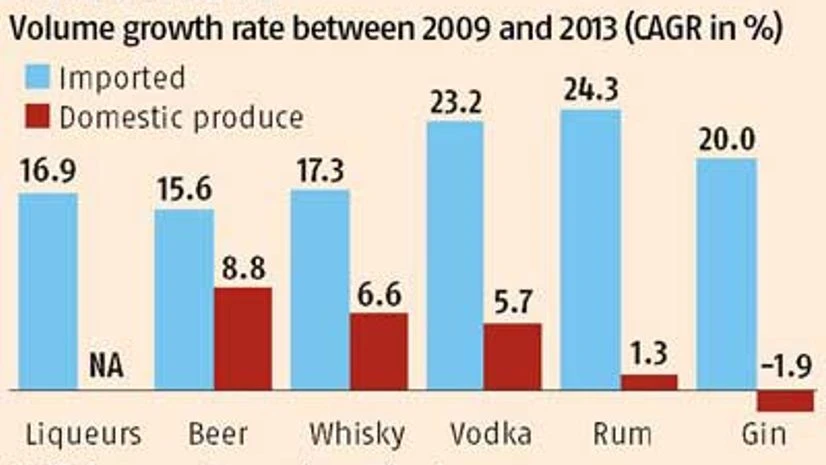India may be new to whisky, but it did not take long for the world’s second largest population to become the world’s largest market by volume for the drink.
And, Indians now prefer imported liquor over home brews. Over the past five years, this shift in preference has accelerated.
According to International Wine and Spirits Research (IWSR), India’s whisky consumption doubled between 2007 and 2012 to about 1.4 billion litres. Between 2000 and 2013, sales of imported whisky grew 17.3 per cent annually, while local sales grew 6.6 per cent.
Numbers for the past decade confirm the trend. Between 2004 and 2013, imported whisky sales grew 22.5 per cent annually against 13.6 per cent for the domestic produce, while whisky as a segment grew 13.8 per cent annually.
“Growth is higher for imported spirits because it is on a lower base. But consumption of imported spirits across categories is growing fast,” said an analyst with a global consulting firm.
“More double-income families with higher disposable incomes and a young generation travelling more than it used to a few years ago provide exposure to Western society and culture. On the other hand, modern retailing, liberalised imports and an increasing number of women drinkers are fueling the growth of imported spirits,” said an executive with a firm engaged in selling imported spirits.

Not just whisky, the trend is wider. According to IWSR, sales of imported vodka, rum, gin and beer grew, respectively, at 23.2 per cent, 24.3 per, 20 per cent and 15.6 per cent annually between 2009 and 2013. Locally made vodka, rum, gin and beer sales grew at 5.7 per cent, 1.3 per cent, -1.9 per cent and 8.8 per cent, respectively, over the same period. Liqueurs, dominated by imported brands, grew 22.5 per cent annually between 2004 and 2013.
However, imported spirits constitute only a fraction of India’s liquor sales.
According to the Associated Chambers of Commerce and Industry of India , sales of imported spirits, including duty-free, in India is estimated to cross the five million case mark by 2015, at an annual growth rate of 25 per cent, up from around 3.1 million cases now.
Euromonitor International has projected the volume growth of single-malt scotch at 128.4 per cent and blended scotch at 106.7 per cent between 2012 and 2017.

)
